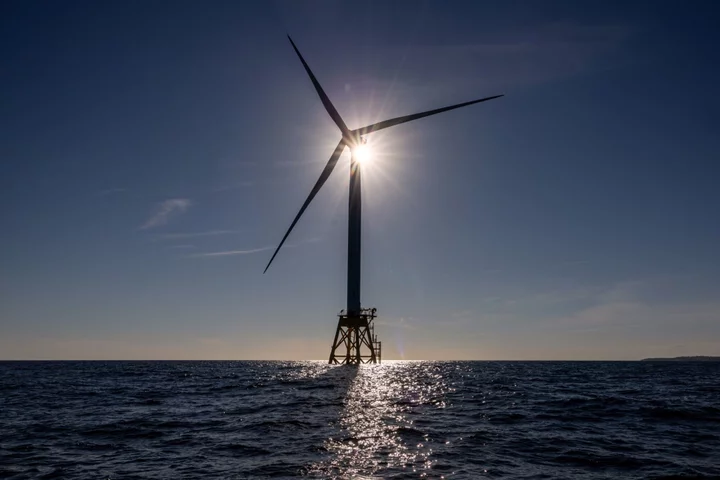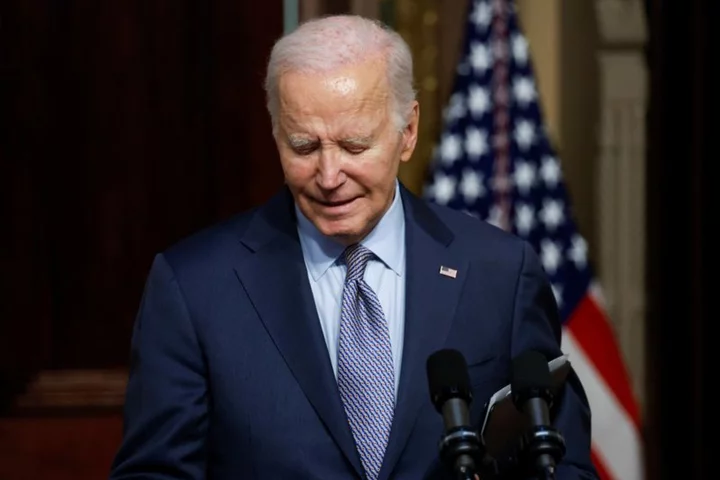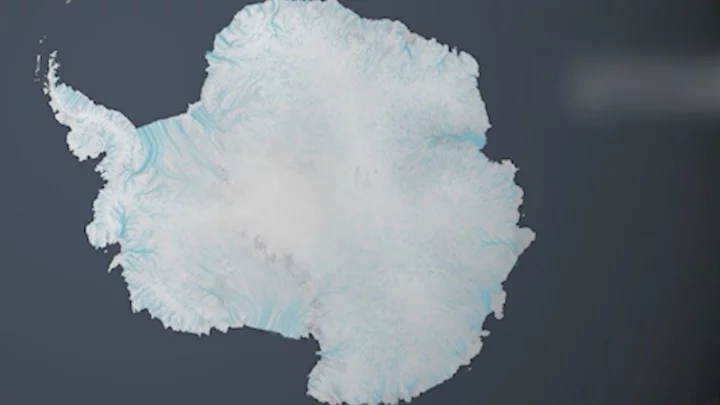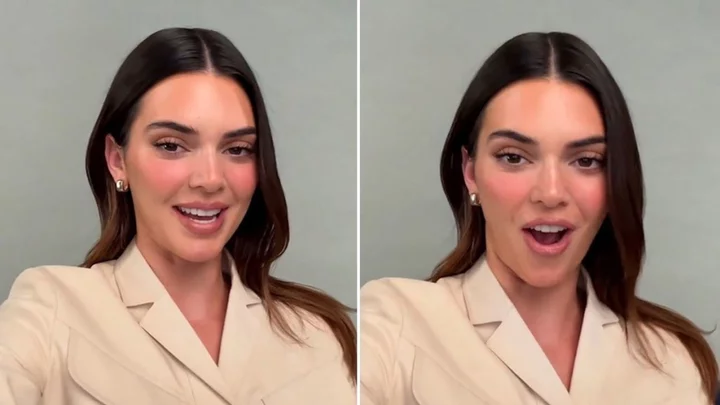
Canada Urged to Get Ambitious to Harness Offshore Wind Potential
Building wind farms off Atlantic Canada’s coast would be a game-changer that transforms the region into an “energy
2023-10-14 00:55

Heung-min Son FC 24: How to Complete the Premier League Player of the Month SBC
Heung-min Son Premier League Player of the Month SBC is now live in EA Sports FC 24 Ultimate Team. Here's how to complete the SBC and if it's worth it considering the price point.
2023-10-14 00:50

EU industry chief warns Alphabet CEO on tech rules compliance after Hamas attack
BRUSSELS EU industry chief Thierry Breton on Friday warned Alphabet Chief Executive Officer Sundar Pichai to be very
2023-10-14 00:47

US Supreme Court temporarily blocks order curbing Biden social media contacts
By Andrew Chung The U.S. Supreme Court on Friday maintained a block on restrictions imposed by lower courts
2023-10-13 23:55

Nasa launches Psyche mission to study an ancient metal asteroid
Nasa has launched its Psyche craft into space, on a mission to study an ancient, metallic asteroid. The spacecraft set off on a six year journey, carried away by one of SpaceX’s Falcon Heavy rockets. It is aimed at an asteroid, also called Psyche, where it will arrive in 2029 and hopes to look back to the beginnings of our own Earth. Most asteroids tend to be rocky or icy, and this is the first exploration of a metal world. Scientists believe it may be the battered remains of an early planet’s core, and could shed light on the inaccessible centers of Earth and other rocky planets. SpaceX launched the spacecraft into a midmorning sky from NASA’s Kennedy Space Center. Psyche should reach the huge, potato-shaped object in 2029. After decades of visiting faraway worlds of rock, ice and gas, NASA is psyched to pursue one coated in metal. Of the nine or so metal-rich asteroids discovered so far, Psyche is the biggest, orbiting the sun in the outer portion of the main asteroid belt between Mars and Jupiter alongside millions of other space rocks. It was discovered in 1852 and named after Greek mythology’s captivating goddess of the soul. “It’s long been humans’ dream to go to the metal core of our Earth. I mean, ask Jules Verne,” said lead scientist Lindy Elkins-Tanton of Arizona State University. “The pressure is too high. The temperature is too high. The technology is impossible,” she added. “But there’s one way in our solar system that we can look at a metal core and that is by going to this asteroid.” Astronomers know from radar and other observations that the asteroid is big — about 144 miles (232 kilometers) across at its widest and 173 miles (280 kilometers) long. They believe it’s brimming with iron, nickel and other metals, and quite possibly silicates, with a dull, predominantly gray surface likely covered with fine metal grains from cosmic impacts. Otherwise, it’s a speck of light in the night sky, full of mystery until the spacecraft reaches it after traveling more than 2 billion miles (3.6 billion kilometers).Scientists envision spiky metal craters, huge metal cliffs and metal-encrusted eroded lava flows greenish-yellow from sulfur — “almost certain to be completely wrong,” according to Elkins-Tanton. It’s also possible that trace amounts of gold, silver, platinum or iridium — iron-loving elements — could be dissolved in the asteroid’s iron and nickel, she said. “There’s a very good chance that it’s going to be outside of our imaginings, and that is my fondest hope,” she said. Believed to be a planetary building block from the solar system’s formation 4.5 billion years ago, the asteroid can help answer such fundamental questions as how did life arise on Earth and what makes our planet habitable, according to Elkins-Tanton.On Earth, the planet’s iron core is responsible for the magnetic field that shields our atmosphere and enables life. Led by Arizona State University on NASA’s behalf, the $1.2 billion mission will use a roundabout route to get to the asteroid. The van-size spacecraft with solar panels big enough to fill a tennis court will swoop past Mars for a gravity boost in 2026. Three years later, it will reach the asteroid and attempt to go into orbit around it, circling as high as 440 miles (700 kilometers) and as close as 47 miles (75 kilometers) until at least 2031. The spacecraft relies on solar electric propulsion, using xenon gas-fed thrusters and their gentle blue-glowing pulses. An experimental communication system is also along for the ride, using lasers instead of radio waves in an attempt to expand the flow of data from deep space to Earth. NASA expects the test to yield more than 10 times the amount of data, enough to transmit videos from the moon or Mars one day. The spacecraft should have soared a year ago, but was held up by delays in flight software testing attributed to poor management and other issues. The revised schedule added extra travel time. So instead of arriving at the asteroid in 2026 as originally planned, the spacecraft won’t get there until 2029. That’s the same year that another NASA spacecraft — the one that just returned asteroid samples to the Utah desert — will arrive at a different space rock as it buzzes Earth. Additional reporting by Reuters Read More Watch live as Nasa launches spacecraft bound to orbit Psyche asteroid Here’s how you can see the ‘Ring of fire’ solar eclipse on Saturday Nasa opens up pieces of a distant asteroid transported back to Earth Prada to design Nasa’s next-gen space suits for Artemis astronauts 1.2 mile-high ‘dust devil’ spotted on Mars by Nasa’s Perseverance rover Rover captures one-mile-high whirlwind on Mars
2023-10-13 22:53

A hidden underground ocean could be causing ‘slow-motion' earthquakes
Scientists think they could have found the cause of a series of “slow-motion” earthquakes that have shaken New Zealand in recent years – a hidden ocean which sits two miles beneath the sea floor. The water was revealed as part of a giant volcanic area formed about 125 million years ago, when an eruption forced a plume of lava bigger than the US to the surface of the Earth. Researchers found the region by towing 3D seismic sensors behind a boat to build up an image of the ancient volcanic area. There, they found thick, layered sediments around long-buried volcanoes which contained much more water than expected. Andrew Gase, from the University of Texas Institute for Geophysics, who carried out the research, said: “Normal ocean crust, once it gets to be about seven or 10 million years old should contain much less water.” The ocean crust scanned by researchers was 10 times as old as this – but water made up nearly half its volume. The tectonic fault line which runs through New Zealand is known for producing slow-motion earthquakes, also known as slow slip events. During one of these, the energy from an earthquake gets released over days or months, often causing little or no harm to people. Scientists don’t know why they happen more at some faults than at others, but they are thought to be linked to buried water. Finding this new area of water at the fault line which creates so many slip events could provide an explanation. Gase said: “We can't yet see deep enough to know exactly the effect on the fault, but we can see that the amount of water that's going down here is actually much higher than normal.” If researchers can work out how the water reserves affect slip events – possibly by dampening them – they could, in turn, understand normal earthquakes better. Scientists also think underground water pressure could play a key part in creating conditions that release tectonic stress via slow slip earthquakes. As a result, Gase said scientists should drill even deeper to find out where the water ends up. Sign up to our free Indy100 weekly newsletter Have your say in our news democracy. Click the upvote icon at the top of the page to help raise this article through the indy100 rankings.
2023-10-13 22:50

Five Ways the UK Is Falling Behind on Climate Goals
Rishi Sunak is being slammed by his climate advisers for making net zero harder to achieve in Britain
2023-10-13 22:45

EA announces launch of FC Tactical
Nick Wlodyk has teased details of 'FC Tactical', a new turn-based soccer game.
2023-10-13 22:24

Instagram has made an AI Kendall Jenner and it's scarily realistic
An AI version of Kendall Jenner is going viral after it was launched by Meta as part of Instagram introducing the future of technology on the app. Known as 'Billie' (@yoursisbillie), it's thought the Keeping Up With The Kardashians star was paid 'millions' to lend her face and voice to the account, which offers advice to fans - and it's near-impossible to tell it's not real. "I don't like this, I don't like where the world is heading, I'm not gonna support this," one terrified user wrote in the comments. Sign up to our free Indy100 weekly newsletter
2023-10-13 21:50

Nasa’s Psyche mission set to launch to ancient metal asteroid today: Live updates
Nasa is about to set off to a distant, metal asteroid that could tell us how planets form. On Friday, the spacecraft – currently folded in the cargo bay of a SpaceX rocket – will leave from the Kennedy Space Centre and begin a mission that will see it arrive at what is thought to be an ancient remnant of a protoplanet in 2029. Propelled by a system of solar-electric ion thrusters being used for the first time on an interplanetary mission, the spacecraft - about the size of a small van - is expected to reach its target on the outer fringes of the main asteroid belt between Mars and Jupiter nearly six years from now. It would then orbit Psyche for 26 months, scanning the asteroid with instruments built to measure the asteroid’s gravity, magnetic proprieties and composition. Psyche measures roughly 173 miles (279 km) across at its widest point. The leading hypothesis for this asteroid’s origin is that Psyche is the once-molten, long-frozen inner hulk of a baby planet torn apart by collisions with other celestial bodies at the dawn of the solar system. It orbits the sun about three times farther than Earth, even at its closest to our planet.
2023-10-13 21:49

Takashi Tezuka reveals the secrets to Mario's success
Takashi Tezuka has revealed what has helped 'Mario' to become a legendary gaming franchise.
2023-10-13 21:24

Energy Mogul Boosts Shale Bet as Argentina’s Renewable Push Stalls
To get to Marcelo Mindlin’s desk in his downtown Buenos Aires office, guests must walk past a big
2023-10-13 21:24
